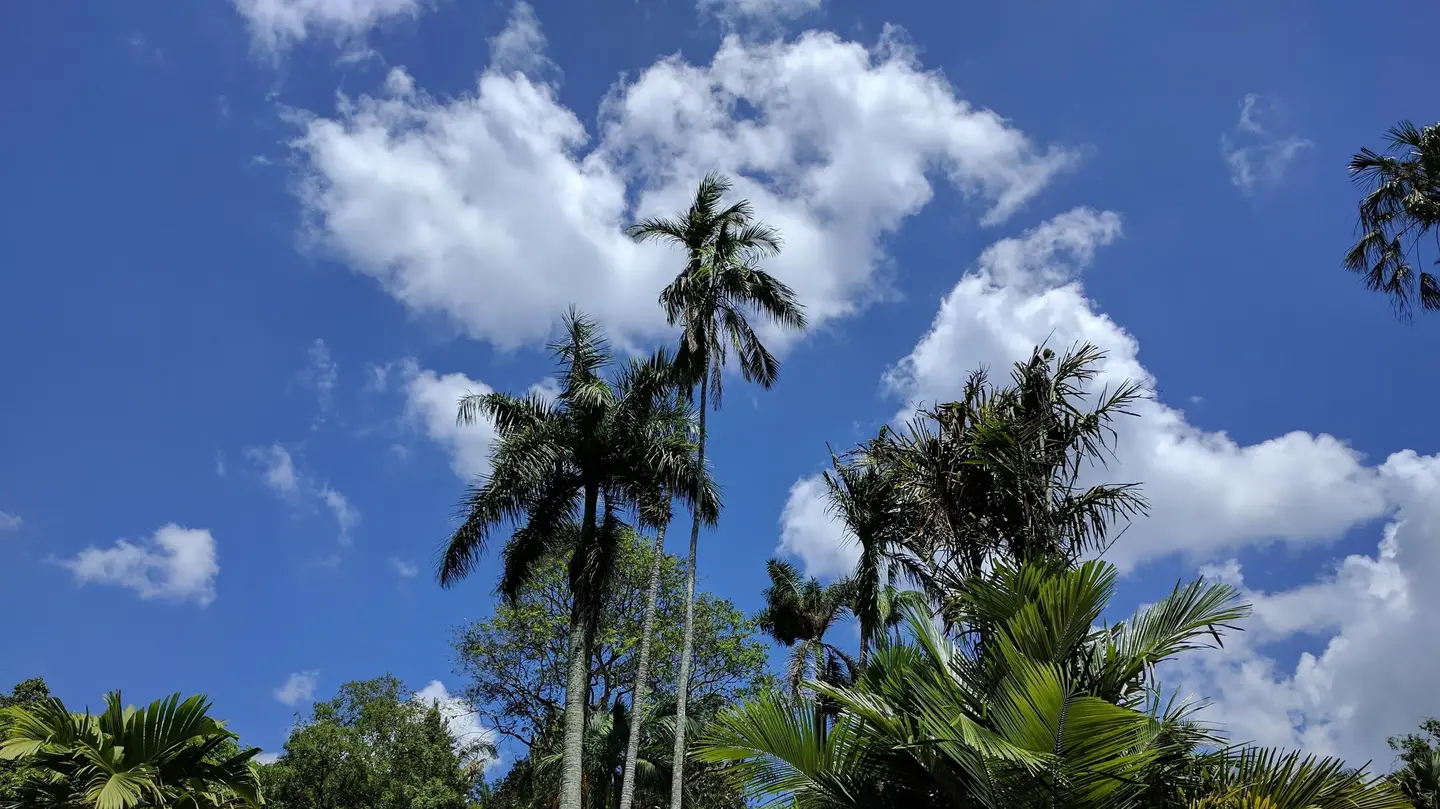Teaser
Automatically Link Pages as Teasers
The teaser elements can be used to display websites as teasers, e.g. to give readers an overview of existing content. It is possible to select individual pages from the page tree or all pages of one or more categories, as you can see here on this demo page.
The teasers can be displayed with or without images, which can be determined in the settings in the backend. A teaser text is also optional: if no text is created, no text will be visible in the frontend. For demonstration purposes, we have mixed teasers with and without text on this page. On a real page, it would be optimal in most cases to choose a uniform path.
The following content is AI-generated and serves to demonstrate different ways of displaying pages as teasers.
One Dimensional Teaser
Multidimensional Teaser
Teasers with texts only
Tabs
Pages or content in tabs
With this plugin, entire pages and content elements can be displayed as tabs. Combine elements and pages, regardless of where they are located in the page tree.
Importance of nature

Nature is an inexhaustible source of beauty and inspiration. From majestic mountains to picturesque coastlines, the diversity of our natural surroundings stretches across the globe. In the dense forests and lush meadows, we find peace and tranquillity as we breathe in the refreshing air and listen to the birdsong. Nature not only offers a breathtaking backdrop, but also an abundance of life and diversity. From tiny insects to majestic wildlife, it is home to an incredible variety of life forms. Every part of nature fulfills an important role in the ecosystem and contributes to the balance and well-being of our planet.
In addition, nature is a source of recreation and adventure for many people. Whether hiking through dense forests, swimming in clear lakes or exploring remote landscapes, nature offers countless opportunities to gain new experiences. It is important to appreciate and protect nature so that future generations can experience the same wonders and joys that we do. Through responsible action and sustainable practices, we can help preserve the beauty and diversity of nature for the future.
Turtles
Water turtles, fascinating inhabitants of both the seas and freshwater ecosystems, are among the oldest reptiles in the world. With their distinctive shell shape and slow yet steady swimming style, they have long inspired human imagination and serve as a captivating symbol of strength, adaptability, and resilience.
These remarkable creatures are found in a variety of habitats, from tropical rivers and lakes to the world's oceans. Among the most well-known species are the green sea turtle, the leatherback turtle, the hawksbill turtle, and the snapping turtle. Each species has its own unique characteristics and lifestyle, but they all share a common fascination for those who observe them.
Water turtles play an important role in their ecosystems, both as prey and predators. As herbivores, they contribute to the control of aquatic plant populations, thus influencing the structure and health of aquatic habitats. At the same time, they serve as a food source for many predators, ranging from fish to birds to mammals.
These amazing animals have adapted to a variety of habitats and conditions over the course of evolution. They spend much of their lives in water but also come ashore to breathe and lay eggs. Their shells provide them protection from predators, while their long necks and powerful limbs enable them to swim and dive efficiently.
Water turtles are also known for their impressive migrations, during which they cover long distances to reach feeding and nesting grounds. Some species travel thousands of kilometers, while others are endemic to specific rivers or lakes and undertake limited migrations.
Despite their adaptability and resilience, water turtles today face a variety of threats. Habitat loss, environmental pollution, overfishing, and poaching are just some of the challenges these animals face. Climate change also poses a serious threat, affecting the temperatures of nesting sites and altering the gender ratio of offspring.
To ensure the protection of these fascinating creatures, comprehensive conservation measures are required. This includes the preservation and restoration of habitats, the reduction of environmental pollution, and the control of illegal activities such as poaching and trafficking of protected species.
Furthermore, public education about the importance of water turtles to ecosystems and the need for their protection is crucial. By raising awareness of these amazing creatures and advocating for their protection, we can help ensure that they remain a source of fascination and inspiration for future generations.
Tab Element with Simple Text Content
Lorem Ipsum is a placeholder text widely used in the printing and typesetting industry. It's used to demonstrate the layout and typography of printed works without distracting from the content. The text consists of a sequence of Latin words and phrases that don't convey any actual meaning but simulate natural language.
The origin of Lorem Ipsum can be traced back to a work by the Roman philosopher Cicero from the 1st century BC, although it has been heavily altered. It's available today in various versions, with the most well-known being the standard version often used as placeholder text in layouts and designs.
Lorem Ipsum is often criticized for lacking semantic content and thus not effectively conveying the actual content of a text. Nonetheless, it remains a useful tool for designers and graphic artists to test the appearance of text in different fonts and layouts.
Although the actual text is nonsensical, Lorem Ipsum has gained a cultural status over time and is often humorously or ironically quoted or parodied in various contexts. Despite its lack of utility, Lorem Ipsum has secured a firm place in the world of printing and graphic design and is likely to continue being used for a long time.
Web standards are guidelines and best practices established by the World Wide Web Consortium (W3C) and other organizations to ensure the consistency, interoperability, and accessibility of websites. These standards encompass technical specifications for HTML (Hypertext Markup Language), CSS (Cascading Style Sheets), JavaScript, and other web technologies.
By adhering to web standards, developers can ensure that their websites are consistently displayed across different browsers and devices. This improves the user experience and makes it easier for visitors to access content, whether they are using a desktop computer, tablet, or mobile device.
Furthermore, web standards help make websites more accessible to people with disabilities by providing guidelines for accessible design and development. This includes using semantic HTML to define the structure and meaning of content, as well as implementing keyboard accessibility and alternative text for images.
Adhering to web standards also benefits developers by improving the maintainability and scalability of websites. By using standards-compliant code, developers can work more efficiently, fix errors faster, and ensure compatibility with future web technologies.
Overall, web standards play a crucial role in creating high-quality, user-friendly, and accessible websites that meet the needs and expectations of modern internet users. Therefore, their adherence is an essential aspect of any web development strategy.
"Behind the word mountains" is a picturesque expression often used to refer to the unknown, mysterious, or unexplored. It can refer to both concrete and metaphorical mountains that mark the boundaries of the known and arouse curiosity about what lies beyond.
In a literal sense, these "word mountains" can metaphorically represent obstacles that must be overcome, whether in nature, literature, or daily life. They represent the challenges and adventures that await us when we venture into unfamiliar territory.
Metaphorically, the "word mountains" can also point to the limits of human knowledge and imagination. They symbolize the unexplored areas of the mind, creativity, and possibilities waiting to be discovered and explored.
The phrase "Behind the word mountains" encourages us to look beyond the familiar, to dream beyond what is known, and to exceed the limits of the accustomed. It reminds us that life is full of mysteries and undiscovered treasures just waiting to be explored.
A pangram is a sentence that contains all the letters of the alphabet at least once. Pangrams are often used as exercises in typography, typing, and typesetting to ensure that all letters are evenly represented. A famous example of a pangram is: "The quick brown fox jumps over the lazy dog." This sentence includes all 26 letters of the English alphabet.
Pangrams can be found in various languages and cultures and serve not only practical purposes but are also used in puzzles, games, and as creative challenges. They often require creative word choices and can lead to amusing or unusual sentences.
The use of pangrams is not limited to the Latin script; they also exist in other alphabet systems. In typography, they are particularly useful for testing the readability and aesthetics of fonts.
Although pangrams are primarily known as technical exercises or pastimes, they also have artistic value and can serve as starting points for poems, stories, or creative writing projects. Overall, pangrams are a fascinating linguistic phenomenon that reflects the diversity and structure of our alphabet systems.
Accordions & FAQ
So-called "accordions" are content elements that can be folded in and out. The name accordion can be traced back to the optical similarity to the folds of an accordion, also called accordion, or squeezebox. Each foldable element symbolizes a fold of the accordion, which folds and opens again when playing.
Simple Accordions with Text/Image
A wonderful cheerfulness is like a sunbeam breaking through the darkest clouds and brightening the spirit. It's that liberating moment when the burden of everyday life momentarily falls from one's shoulders and a feeling of lightness pervades. This cheerfulness can arise from the simplest things: a hearty laugh, an inspiring sunset, or a loving gesture.
It's the spark that ignites the fire of joy in life and reminds us that life can be beautiful despite its challenges and setbacks. In moments of wonderful cheerfulness, we feel alive, connected, and grateful for the small joys of existence.
This cheerfulness can also be contagious, spreading like a cheerful virus and illuminating the hearts of others. It creates connections between people, breaks down barriers, and gifts us with the joy of community and togetherness.
In a world often characterized by stress, hustle, and worries, a wonderful cheerfulness is like an oasis in the desert—a source of refreshment and solace. It's worth appreciating and cultivating moments of cheerfulness because they enrich our lives and bring us closer to what truly matters: love, joy, and humanity.

Accordion elements are popular design elements on websites, designed to present content in an organized and space-saving manner. They allow for the display of large amounts of information in compact sections, making it easier for users to navigate through the content. An accordion typically consists of a vertical stack of sections that expand or collapse when the user clicks on them.
On websites, accordion elements are commonly used for FAQ sections, product descriptions, guides, or other content that needs to be presented in a concise format. By using accordion elements, website designers can structure and present complex information without overwhelming users with an excessive amount of text or content.
Another advantage of accordion elements is their adaptability to various screen sizes and device types. They automatically adjust to the screen width, providing a consistent user experience across desktops, tablets, and smartphones.
Moreover, accordion elements can help optimize website loading times since they only display the content that the user actually wants to see. This contributes to improving user-friendliness and reducing bounce rates.
Overall, accordion elements are a useful design tool for effectively presenting content on websites, enhancing the user experience, and expanding the design options for website designers.
FAQ Element for Display in Google Search Results
This element contains the structured data supported by Google to display an accordion element in Google search results.
The simple accordion and the FAQ element are the same element. You can switch between the two modes with a simple checkbox in the backend.
Creating a page can involve a lot of programming work. Content management systems (CMS) allow even those who have no or only rudimentary programming skills to create a website.
So a CMS is a software with which you can create and edit websites without programming knowledge. The layout of the page is separated from the content. An editor will therefore not be able to damage the appearance and functionality of his own website through lack of knowledge, because he does not have to or is not able to intervene in the code. Furthermore, several editors can manage a page at the same time. This is a big advantage for webpages that produce a lot of content. If, on the other hand, a web designer needs to make adjustments, the content remains unaffected by the design changes.
TYPO3 is one such a system and is one of the most popular CMS in Germany. It is also an open source project with a broad and active community that is constantly developing, testing and improving the system. This results in a stable and secure CMS.
TYPO3 is in contrast to simple homepage construction kits very flexible and almost unlimitedly extendable, so that it is suitable for small websites as well as for complex or increasingly complex projects.
In order to edit your page, you need to log in to the backend of your page:
- In the address bar of your browser, add /typo3 to the complete URL of your page.
- When reloading the page, the login window to the backend will appear.
- You need a username and password to log in. Enter the data and confirm your entries by clicking on the button below or by pressing the enter key.
- You are now in the backend of your page.
- First change the automatically assigned password.
Accordion Grid Element
Accordion elements can also be created as grid elements. In these you can design contents completely freely.

FAQs (Frequently Asked Questions) are an important resource on websites to answer commonly asked questions and assist users in navigation. By integrating structured data, FAQs can be better understood and presented by search engines. Structured data allows search engines to better interpret the content of a website and highlight it in search results by marking specific information such as questions and answers. This can help increase the visibility of the website and improve click-through rates as users can directly access the relevant answers. Additionally, structured data can enhance the user experience by allowing search engines to display rich snippets or knowledge panels with additional information about the FAQs. Overall, structured data provides an effective way to optimize FAQs and improve the discoverability and visibility of websites in search engines.
















